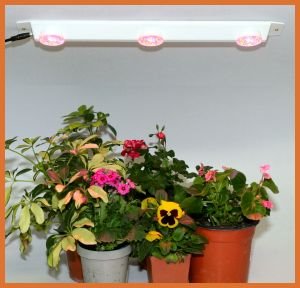As promised in the LED Grow Lights 1000+ Lumen LED post, here is one of many Bench Power Supplies posts for working with the latest generation UHB LEDs. This is one of the best Solid State Lighting PSUs on the market, and should be on every DIY LED Grow Light bench.
( Radiant Research- please send over an engineering sample for test and review purposes, I will pay for shipping and duty! )
Integrated System Technologies, a leading European LED driver design manufacturer, has released the new 210 Watt 3 channel iDrive™ 1000 LED driver. The driver is a natural extension to the current iDrive™ range which includes the 3 channel 350mA driver, the iDrive™ Lite. Both products incorporate patented Pulse Amplitude Modulation (PAM) drive technology and ColourCool™, a thermal management system to ensure optimum LED output and life.
The new iDrive™ 1000 delivers an industry leading level of energy efficiency provided through new patent pending technology which delivers twice the power density of the iDrive™ Lite. The breakthrough in combining high power density with leading PSU efficiency ensures the iDrive™ 1000 has a small footprint and does not require large heatsinks.
A new feature enables iDrive™ 1000 users to choose the forward current, independently on all three channels between 500mA-1000mA. This exclusive feature introduced to the high power LED market place enables users to select the forward current digitally by channel for optimum LED performance. Each channel’s forward current can be precisely varied in 50mA steps via the LED display panel. Unlike most solutions in the market, there are no external DMX address switches making it very quick to install and configure. The 1000 provides an increased forward voltage range up to 55V per channel to allow for the increase in forward voltage in high power LEDs when driving these products at higher currents. Additional features include a master/slave option, increased internal preset programmes and user selectable thermister settings for desired fixture lumen maintenance in any environment.
The iDrive™ range uses patented technologies that differentiates it from all LED drivers on the market, in addition the drivers will only supply the correct forward voltage required by each LED channel and compensates for voltage drop over long cable runs thereby optimising the energy required to drive the LED fixture. This makes the iDrive™ solutions the most intelligent and power efficient drivers on the market, providing a significant advantage to all SSL manufacturers that are serious about reducing the carbon footprint of their lighting product range.
Sales Director Matt Fitzpatrick said, “Since we launched the iDrive™ Lite in March 07, it has been received fantastically by the market place however, the design team are extremely excited about the potential of the iDrive™ 1000. There is choice globally for drivers in the 350mA 3 channel class but there are no 210 Watt high efficiency drivers that allow the user to vary the current on each channel between 500mA-1000mA. With many of the high power LED manufacturers now delivering product that is optimised at 700mA and 1000mA drive currents, we now feel that the iDrive™ 1000 will give the SSL manufacturers a high quality power supply solution and allow them to efficiently get more lumens for their money”.
The iDrive™ 1000 will be available in volume from September 2007 with engineering sample available in August
Dimensions 200mm x 150mm x 70mm
Weight 0.8Kg approx.
Compatible with all high power LEDs
About Integrated System Technologies Limited
IST Ltd is a professional lighting group company specialising in the development of innovative lighting solutions for the general, wide area, architectural and entertainment lighting industry. It offers over 20 years of experience in traditional and solid state lighting including award winning electronic and optical system design for a variety of lighting products from controllers to luminaires.
Radiant Research Ltd is the solid state lighting division of IST which designs and manufactures advanced solid state lighting products from LED light engines through to driver solutions. All LED driver technology designed and produced by Radiant Research incorporates our unique patented technology Colour Cool™ (GRANTED in UK & USA) to ensure optimum LED efficiency of multiple channel systems. This unique and patented driving technology uses Pulse Amplitude Modulation (PAM). This technique provides optimum colour mixing (RGB/A/W) and full additive luminosity which, integrated into our closed loop temperature monitory system, ensures optimum LED output regardless of environmental conditions.



